Arabs are a large group of people whose native language is Arabic. Arabs also share a common history and culture. Most Arabs live in the Middle East. The Middle East is a large region that spreads across southwestern Asia and northern Africa. Arabs have also migrated to other countries. European countries with large Arab populations include Belgium, France, Germany, the Netherlands, Sweden, and the United Kingdom. In South America, Argentina and Brazil have many Arab people. So do Canada and the United States in North America.

This article discusses the approximately 250 million Arabs who live in the Arab world. There are two chief definitions of the Arab world. One is a political definition. The other is a linguistic (language-related) one. Politically, the Arab world is usually said to include 18 states. In Asia, these states are Iraq, Jordan, Kuwait, Lebanon, Oman, Qatar, Saudi Arabia, Syria, the United Arab Emirates, and Yemen. The Arab states in Africa are Algeria, Bahrain, Egypt, Libya, Mauritania, Morocco, Sudan, and Tunisia. All 18 states are called Arab states because a majority of their people are Arabs and their governments regard themselves as Arab. Three other countries—Djibouti, Somalia, and Comoros—have only small Arab populations. But they are sometimes included in this political definition because they belong to an organization of Arab states called the Arab League.

The Palestine Liberation Organization (PLO) is also a member of the Arab League. The organization represents Arabs who are working to establish an Arab state in the West Bank and Gaza areas of historic Palestine. The PLO is a group approved by Arab countries to represent the Palestinians.
In a linguistic sense, the term Arab world refers to those areas where most people speak Arabic as their native language. This linguistic definition differs from the political one because some Arab countries include large areas populated by non-Arabs. Some non-Arab countries also have significant Arab minorities. For example, the Kurds of Iraq and the Berbers of northern Africa are non-Arabs living in Arab states. At the same time, many Arabs live within the borders of such non-Arab nations as Iran and Israel. In this article, the term Arab world chiefly refers to the countries usually considered Arab in a political sense.
The word Arab was probably originally associated with tribes of the Arabian Peninsula and nearby Middle East. These tribes lived a nomadic lifestyle herding camels. By about 400 B.C., the word was also applied to the settled people in these areas who spoke the Arabic language. The number of Arabs who follow a nomadic way of life gradually shrank over the centuries. By A.D. 850, many settled people in the region identified themselves as Arabs. Arabic had become the standard language of trade and religious discussions by this time. Today, almost all Arabs live in cities, towns, and villages.
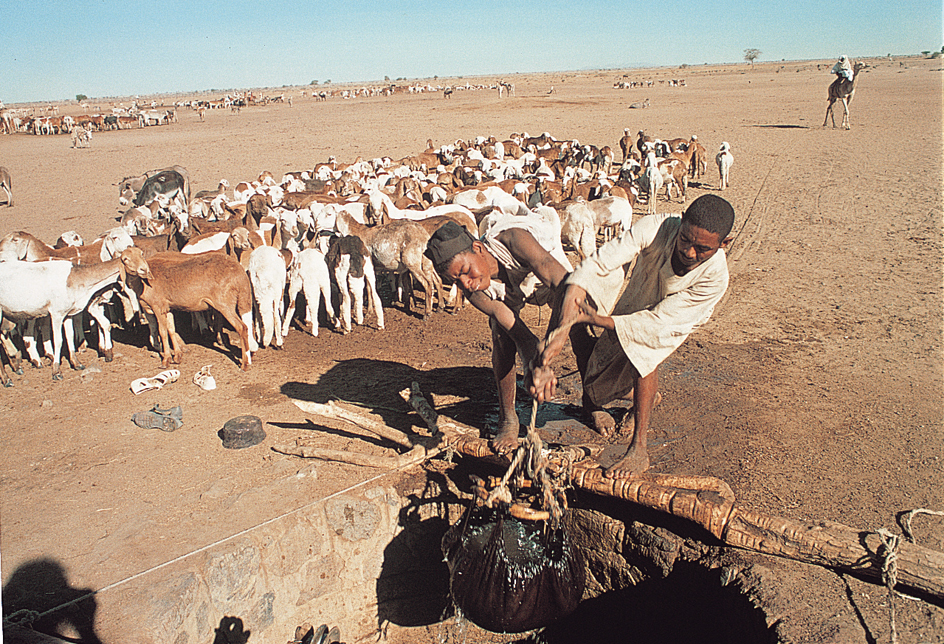
Arabs today are united mainly by their culture. Among the most important aspects of Arab culture are the Arabic language and shared social values. The Arabs also have common traditions in literature, art, and music. Religious and historical factors also bind the Arabs together. Most Arabs are Muslims, followers of a religion called Islam. The Arabs’ rise to political and cultural importance during the A.D. 600’s and 700’s was closely associated with the rise of Islam. Another bond among all Arabs is their shared pride in classical Arab and Islamic civilization. The modern Arab identity emerged during the 1800’s and 1900’s. During that period, most Arab lands were colonies of European powers. Thus, Arabs also share a sense of themselves as former subjects of European rule.
Despite this common heritage, deep differences exist among the Arab countries. For example, many Arab countries possess valuable petroleum deposits. The export of oil has made some countries, such as Kuwait and Qatar, rich. But such countries as Sudan and Yemen remain poor. Some countries, including Jordan and Lebanon, have highly urban societies. Many people in those countries work in industry or commerce. Others, such as Mauritania and Yemen, have largely rural societies. There many people are farmers or herders. Some countries, such as Lebanon and Tunisia, have been heavily influenced by European and American culture. Others, such as Saudi Arabia, have chosen to maintain traditional culture in many areas of life. These and other differences have caused conflicts, and even wars, within the Arab world.
Land of the Arabs
The Arab world extends over about 5 million square miles (13 million square kilometers). It covers roughly three main regions. These regions are the Arabian Peninsula (sometimes called Arabia); northern Africa; and part of an area called the Fertile Crescent. The Fertile Crescent includes Iraq, Jordan, Lebanon, Syria, and historical Palestine. Palestine today consists of the non-Arab state of Israel and the Arab areas of the Gaza Strip and the West Bank.
Despite the vast area of the Arab world, only a small percentage of it is suitable for settlement. Much of the region is extremely hot and dry. It has large deserts. These barren regions include the Sahara of northern Africa, the deserts of the Arabian Peninsula, and the Syrian Desert. At the other extreme are snow-capped mountains. They include Mount Lebanon in Lebanon and the peaks of the High Atlas range in Morocco. The vast majority of Arabs live in well-watered hilly regions, fertile river valleys, and humid coastal areas. The most densely settled area is the Nile Valley and Nile River Delta of Egypt. Virtually all the people of Egypt—almost a third of all Arabs—live in this area. A large number of Iraq’s people live in the fertile area between the Tigris and Euphrates rivers. The Valley of the Orontes River in Syria is likewise densely populated. Other population centers include the coastal and hill zones of northwestern Africa and of Lebanon, Syria, and parts of Palestine.
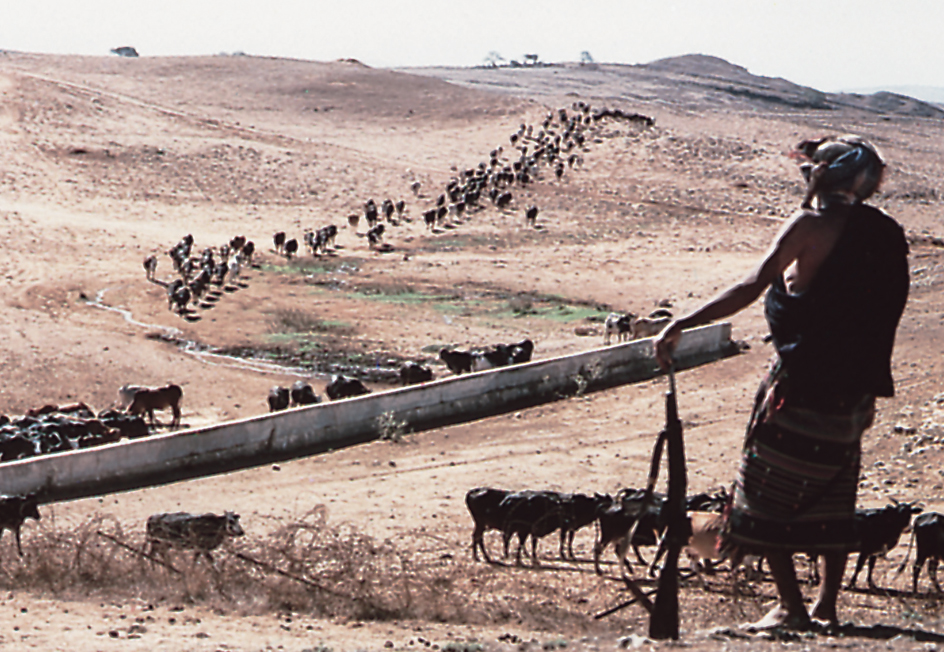
Historically, a scarcity of water hampered population growth and economic development in the dry areas of the Middle East. Irrigation has expanded the amount of land that can be farmed in many regions. However, sizable Arab cities have long existed even in dry areas. Cities of the Arab world thrived in the desert mainly because they lay at the crossroads of major trade routes.
Life in the Arab world
About half of all Arabs live in cities and large towns. Many of these people work in factories or in such fields as business, government, and health care. Most other Arabs live in villages or small towns. They work as farmers or in local trades. In many Arab countries, the creation of modern road networks has enabled industries to spread to rural areas. As a result, some villagers have jobs in nearby factories. In the oil-producing countries of the Arab world, a large percentage of the male population work in the petroleum industry.
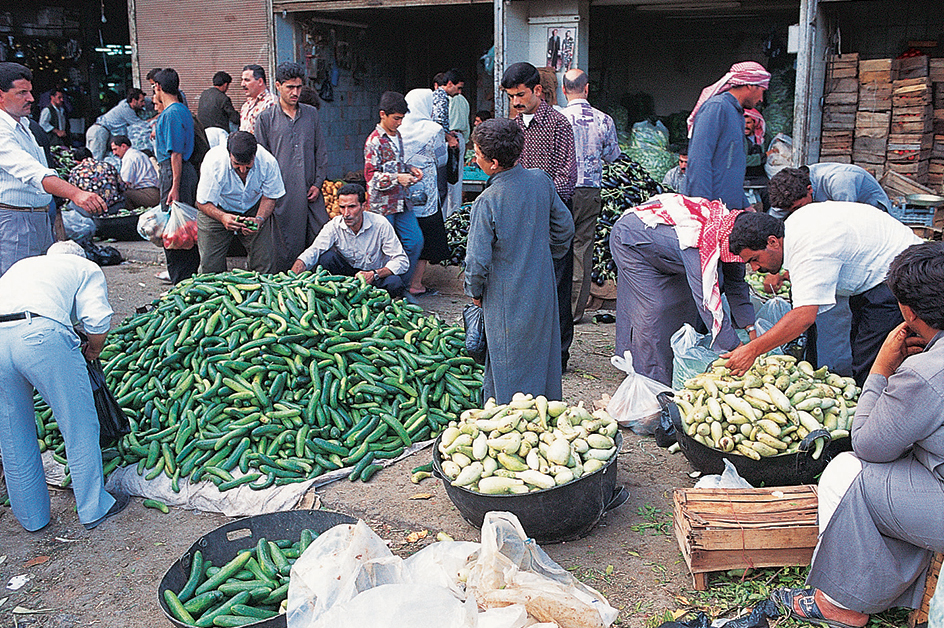
In the past, many Arabs were nomadic herders. They lived in tents and crossed the desert with their camels, sheep, goats, or cattle in search of water and grazing land. Today, few Arabs are nomads. Livestock herding now resembles ranching rather than nomadic life. Herders usually transport their animals— even camels—by truck.
Language.
Arabic belongs to the Semitic group of languages. This group also includes Hebrew and Aramaic. Virtually all people who consider themselves Arab speak Arabic as their native language. But different forms of spoken Arabic, called dialects, vary considerably from one region to another. A common form of Arabic taught in schools is used to communicate across different dialects. This type of Arabic is called Modern Standard Arabic (MSA) in English or Fus-ha in Arabic. MSA is a modernized and simplified version of classical Arabic. MSA serves as the chief form of written Arabic. It is also the language used in mosques and universities. People speak it in public speeches and at other formal events. Radio and television broadcast in MSA throughout the Arab world. Most Arabs know and use two different forms of Arabic. They use their own native dialect in informal settings. They speak MSA for formal occasions and also use it written communication. Arabs today are increasingly familiar with MSA because of a rise in literacy and exposure to television and other media.
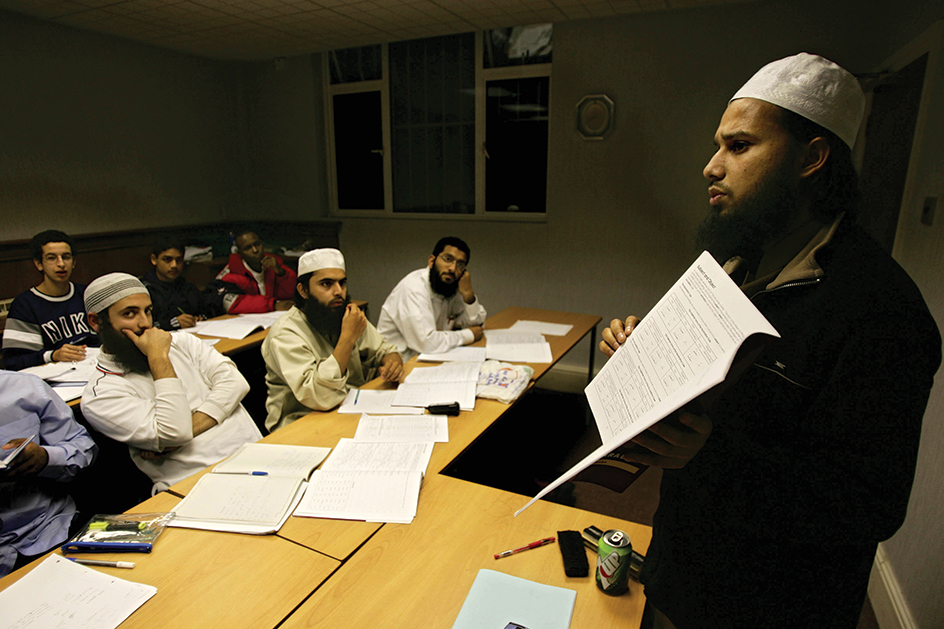
Many other languages are used in various parts of the Arab world. For example, many people speak French in the former French colonies of Algeria, Morocco, and Tunisia. Many Arabs also learn English. Many large businesses use English for commercial purposes.
Religion.
More than 90 percent of Arabs are Muslims. Most belong to the Sunni branch of Islam. However, significant Shī`ite Muslim communities exist in Iraq, the eastern Arabian Peninsula, Bahrain, and Lebanon. Some Shī`ites live in most other Arab countries. Small numbers of Arabs belong to other Muslim groups. Druses, who follow a religion related to Islam, live mainly in Lebanon, Syria, and Palestine.
Most non-Muslim Arabs are Christians. The Copts of Egypt belong to one of the oldest Christian groups. Other Christian Arabs belong to various Eastern Orthodox, Roman Catholic, or Protestant churches. They live mainly in Iraq, Jordan, Lebanon, Syria, and Palestine. Most of the Christians in Palestine and adjoining areas are the descendants of the oldest Christian communities in the world. However, in some of these areas their numbers are shrinking. Many Christian families move to escape economic and political hardship.
Family life.
Arabs strongly value family ties. Traditionally, Arabs have placed great importance on belonging to family or kinship groups. These groups include the extended family, clan, and tribe. An extended family includes members of two or more generations, many of them sharing one home. A clan consists of several related families. A tribe might include hundreds of families. In the past, most social and even many business activities took place within these groups. In traditional Arab society, the role of the family is to take care of all its members. Relatives look after the sick, the elderly, and people with disabilities. In exchange, individuals were expected to be loyal to their kinship group. They were expected to protect the reputation of their kinship group by behaving properly and maintaining the family honor.
The traditional Arab kinship system emphasizes hospitality as a source of honor. A host who richly entertained a guest raised the reputation of the entire tribe. In the past, parents often sought marriage partners for their children within their own clan or tribe. Even after marriage, men and women remained close to the family into which they were born. If a woman divorced, she could return to her family. They were responsible for her support until she remarried. A divorced man returned to his own family, and his parents cared for his children.
Today, many traditional kinship ties have loosened, especially among Arabs in cities. The need for some people to move away from the extended family to earn a living has weakened family relationships. Among the poorer countries of the Arab world, many men must find work abroad. They leave their homes for long periods. Women now make up a significant part of the labor force in many Arab countries. Increased educational opportunities have also led a number of women to work outside the home. Arab culture has also been affected by European and American ideas about individualism. These ideas influence the life and career choices of some men and women. Most Arab states have developed social welfare programs that now provide some of the services formerly provided by the family.
Today, for many Arabs the family continues to be the main source of social and often economic support. Many rural Arabs still live in extended families. Several generations inhabit a single household. Arabs in cities often choose to live near their relatives. Many Arab children are raised by grandparents, aunts, uncles, and other relatives in addition to their parents.
Women formed the focus of family life in traditional Arab culture. They supervised the raising of children. They also prepared meals and organized family celebrations. An Arab wife was responsible for the running of the household. She was usually consulted by her husband, brothers, and sons on important decisions. Today, the role of the mother in the Arab family remains strong.
Education.
Arab institutions of higher learning have existed for centuries. For example, al-Azhar University in Cairo, Egypt, was founded in A.D. 970. It is one of the oldest universities in the world. It predates European universities by several hundred years.
Until the 1800’s, religious authorities operated most schools in the Arab world. Today, all Arab countries also have free, nonreligious primary and secondary schools that provide public schooling. In most Arab countries, about 90 percent of all children receive at least a primary education. Most Arab governments regard education as key to national development. They devote large portions of their national budgets to fund education. However, in many poorer Arab states, schools and universities are badly maintained. The level of education remains low in such countries. As a result, literacy rates differ from country to country in the Arab world.
Most countries in the Arab world have a variety of public colleges, technical colleges, and public universities. At these institutions, students study either for free or for a small tuition fee. Private educational institutions established by religious groups and by private or international organizations also exist in many Arab countries. However, private education is usually available only to the wealthy.
Traditionally, some people in the Arab world considered education to be less important for girls than for boys. However, enrollment rates for girls have steadily increased. Today, an increasing number of Arab women are studying professional fields, such as engineering, law, and the sciences.
Literature and the arts.
Arabic literature began about 1,600 years ago with pre-Islamic poetry that glorified the ideals of tribal customs in the Arabian Desert. This was an oral literature that was not written down until much later. The first major Arabic written work was the Qur’ān, the holy book of Islam. The Qur’ān dates from the 600’s. Many scholars regard the Qur’ān as the greatest masterpiece of Arabic literary style. Many Muslims memorized the Qur’ān completely. It became the model for the classical Arabic language. See Qur’ān.
Classical Arabic literature extends from the time of the Qur’ān to about the mid-1800’s. It includes a rich tradition in poetry and prose. A highly developed poetic tradition flourished in the Arab world beginning in the 700’s. Arabic poets produced works of great lyrical beauty. Some poetic works expressed deep philosophical and religious thought. Others were political in nature. Still others were celebrations of the beauties of nature and the joy of life. Poetry remains especially beloved in modern Arab culture. Nearly all Arabs enjoy reciting and listening to classical and modern verses. Many compose their own poetry. Modern Arab poetry often deals with political themes.
Arabic prose literature covers a wide range of forms and styles. Scholarly works are written in classical Arabic. They range from witty essays of social commentary to large volumes on history and philosophy. For example, the Mūqaddimah of Ibn Khaldūn, a historian of the 1300’s, examines the rise and fall of civilizations. Prose literature also includes scholarly writings about religion or interpretation of the Qur’ān. Arab writers also dealt with legal and political theory. Popular prose was usually composed in various local Arab dialects. It includes folk epics about heroic figures of the past and the popular tales of the Arabian Nights. It also includes proverbs, many of which are still used by Arabs today. Arabic novels and plays have become increasingly popular since the 1900’s.
Arabs were important in the flowering of art and architecture throughout the Muslim world from the mid-700’s (see Islamic art). Traditional crafts, such as metalworking, woodworking, pottery, and glass blowing, still flourish. Weaving, lacework, and embroidery are also common. Since about 1900, painting and sculpture have become popular in many Arab lands. Calligraphy, the art of beautiful handwriting, has long been a favorite form of art in the Arab world.
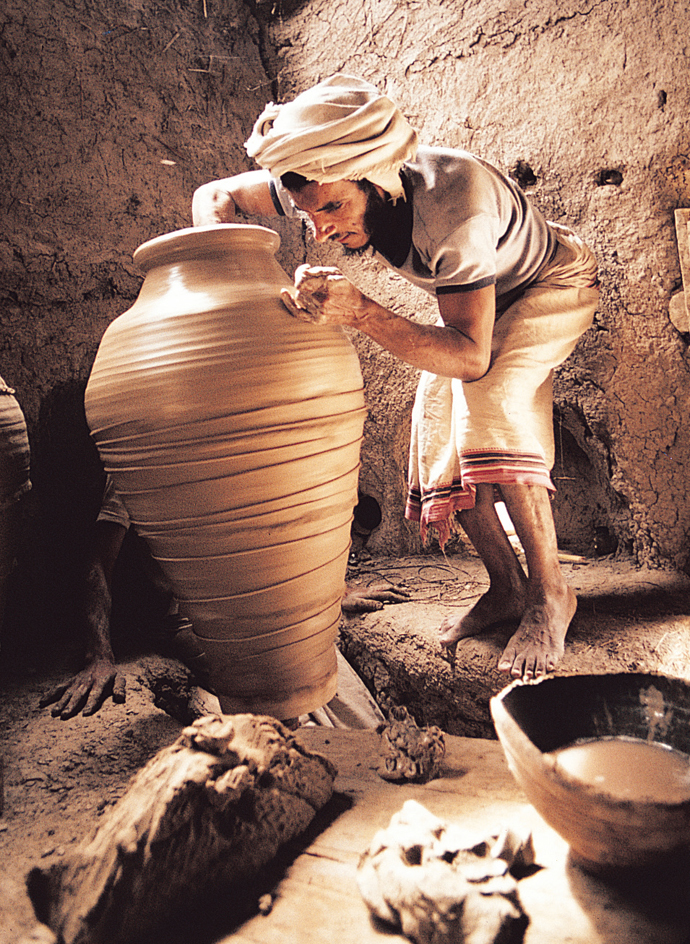
Traditional Arab music has strong rhythmic patterns. It is closely linked with the poetic tradition. Arab music is both vocal and instrumental. Many of the musical instruments found in European and American orchestrasare derived from Arab instruments. These instruments include castanets, guitars, lutes, oboes, and tambourines. Today, many Arab musicians experiment with new styles. They mix aspects of Arab and non-Arab music or combine styles from different parts of the Arab world. Arab rap music, popular in both Europe and the Arab world, is one example of the globalization of Arab music.
Loading the player...Arabic contemporary Bedouin music
Sciences.
Arab culture has made great contributions to world civilization in the sciences. From the 700’s through the 1500’s, the Arab world was a leading center for scientific learning and discovery. Arabs preserved and studied ancient manuscripts from Greece and Rome. They carefully translated the works into Arabic. Arab conquests in India and Iran introduced Arab scientists to other scientific developments. They also learned the Indian system of numbers and the decimal numeral system. Arab scholars then added their own new calculations, discoveries, and theories. Arab scientists were especially skilled in the fields of mathematics, including geometry, arithmetic, and algebra. They also made many advances in astronomy, geography, and medicine.
Many major Arabic scientific works were introduced into Europe from about the A.D. 800’s through the 1400’s. Scholars translated these works into Latin, the language of learning in western Europe. These introductions contributed to the beginnings of the scientific revolution in Europe in the 1500’s. Arabs today continue to feel a shared pride in the contributions of Arab culture to science. See Science (The Middle Ages).
Food and drink.
Arab cuisine (style of cooking) varies among regions. In some areas, such as Yemen, the food can be spicy. In others, such as Egypt, it can be bland. Basic foodstuffs in the Arab world include beans, chickpeas, lentils, vegetables, and rice. In northern Africa, couscous (steamed cracked wheat) replaces rice as a staple. Beans, chickpeas, or eggplants are often cooked into dips. Arabs eat these dips by scooping up mouthfuls with thin bread, called pita in Western countries. Most meals include bread. People also eat eggs and milk products, especially feta and other cheeses and yogurt. They also consume a wide variety of salads and cooked vegetables. A specialty of Arab cuisine is to stuff vegetables with rice or a mixture of rice, meat, and pine nuts. Olive oil, sesame seed oil, or sesame seed paste add flavor to many dishes. Arabs also enjoy chicken, lamb, beef, and fish. These meats are either baked, grilled, or made into a stew.
Fresh and dried fruits are the main desserts. On special occasions, Arabs serve cookies, cakes, puddings, preserved fruits, and sugared almonds. Honey-soaked pastries, such as baklava, are other treats. Water, coffee, and tea—especially mint tea—are the most popular beverages.
Clothing.
Because of the hot climate of most Arab lands, both men and women have traditionally worn loose-fitting garments. The clothing covers most of the body and head, shielding them from the sun. Traditional Arab clothing for men consists of a full-length robe, or a cloak over some combination of shirt, vest, and skirt. Traditional headcovers for men were the turban, skullcap, or kaffiyyeh. The kaffiyeh—a loose, folded headscarf—was often held in place by a decorative cord. In the Arab countries surrounding the Persian Gulf, most men dress for work or for public occasions in kaffiyyehs (which they call ghutrahs) and traditional robes called dishdashahs. In Egypt, a man’s traditional robe is called a galabiyyah. It is usually worn with a skullcap. Some Arab men combine elements of modern and traditional dress, such as wearing a sports jacket over a robe. However, in the towns and cities, many men today wear clothing like that worn in Europe and the Americas, such as pants, shirt, coat, and a tie.
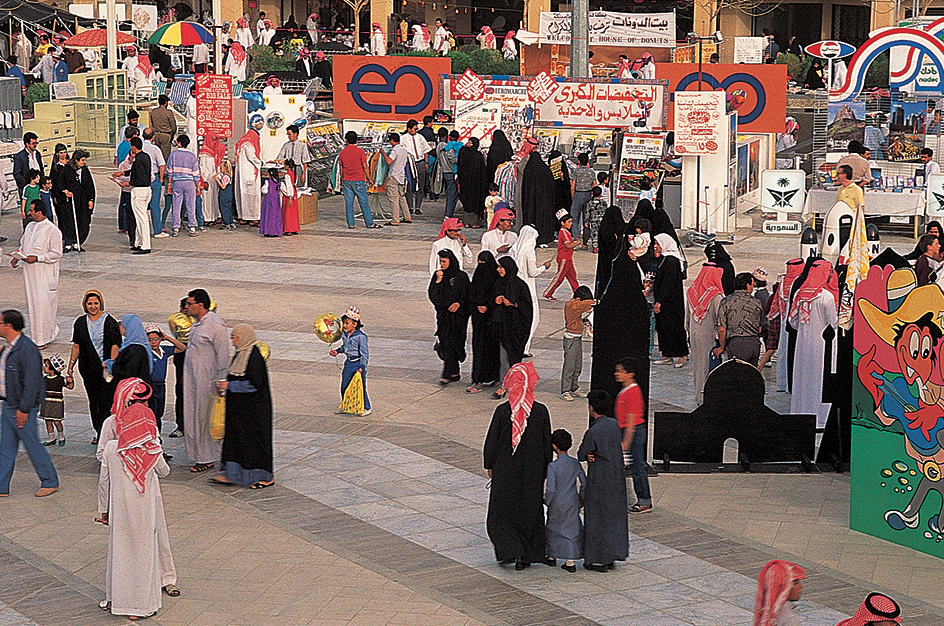
In most Arab countries, women have a choice of clothing. They might wear clothing like that worn in Europe and the Americas. Or they might choose a combination of a modest floor-length garment and a headscarf. This traditional style of dressing is usually known as Islamic dress or the hijab, from a word that in some regions means headscarf. Since the 1970’s, many Arab women have preferred to wear the hijab and rejected European and American clothing styles. In Saudi Arabia, women are required by law to wear the abaya, a black mantle and head covering, when they go out in public.

Architecture.
Arabs developed new forms and styles of architecture. The mosque form originated from the style of the prophet Muhammad’s house, built in the 600’s in Medina, now in Saudi Arabia. Arabs developed new technologies for building mosques, castles, fortresses, and private dwellings. The traditional Arab house was a mud-walled structure with an enclosed courtyard. Today, many modern Arab homes, both urban and rural, open to a private or semiprivate central courtyard. Blank walls face the street. The dwellings are constructed in this way to ensure the privacy of the inhabitants.
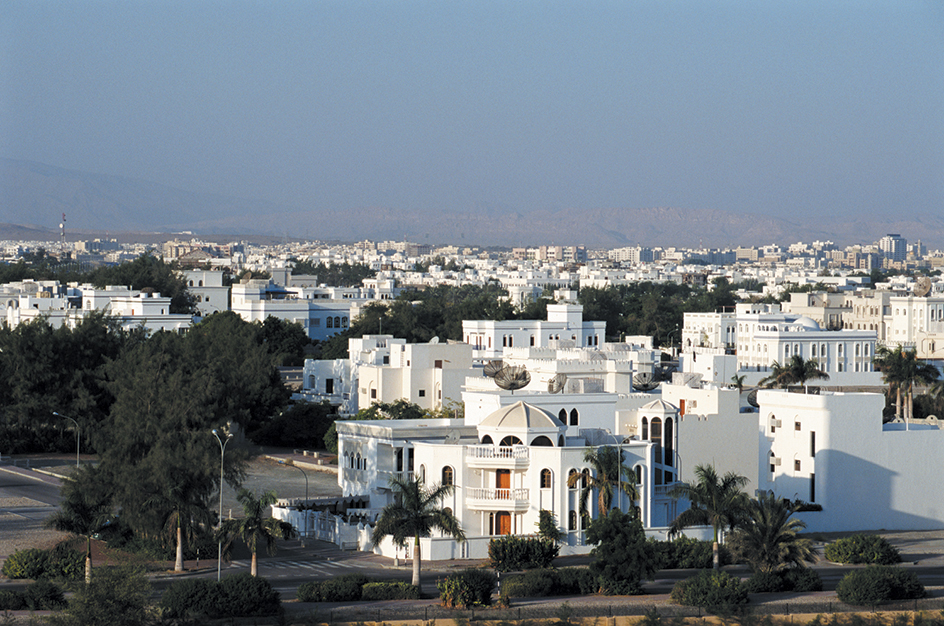
Most rural Arabs live in one- or two-story houses of brick, mud brick, or stone. Mud-brick architecture, in particular, takes a wide variety of forms. It ranges from simple rectangular structures to the beehive-shaped houses of northern Syria. Mud brick is cheap and easy to use. It provides excellent insulation against heat and cold. However, concrete and cinder blocks are increasingly replacing mud brick as building materials in Arab countries.
Traditional forms of Arab architecture still exist in large cities. The distinctive many-storied mud-brick or stone buildings in Yemen and southern Saudi Arabia rank among the world’s first “skyscrapers.” However, most modern buildings in Arab cities use new materials and styles. Apartment buildings are more common in towns and cities. Office buildings made of cement, metal, and glass stand in all large cities.
Economy.
For centuries, the Arab world was a crossroads of international commerce. Arab and other merchants carried goods between Asia, Africa, and Europe. They traded such goods as spices, textiles, porcelain, metalwork, and glasswork. Beginning in the 1700’s, the expansion of European commerce and industry led to economic decline in the Arab world. Then, during the 1900’s, petroleum became one of the world’s most important economic resources. Together, the petroleum-producing Arab countries hold about three-fifths of the world’s reserves of oil. Petroleum has brought enormous prosperity to some Arab governments. Oil wealth has permitted rapid improvement in education, health care, transportation, and other services.
The Arab countries rich in petroleum include Iraq, Kuwait, Libya, Oman, Qatar, Saudi Arabia, and the United Arab Emirates. In addition to petroleum and natural gas, most of these countries also export petroleum-derived chemical products. Port cities in Kuwait, Qatar, Saudi Arabia, and the United Arab Emirates are hubs of international commerce. Other Arab countries have smaller oil reserves and petroleum industries. Some have none at all. Their exports consist mainly of raw materials and agricultural products. Several Arab countries are members of the World Trade Organization (WTO), which works to promote freer trade in goods and services throughout the world.
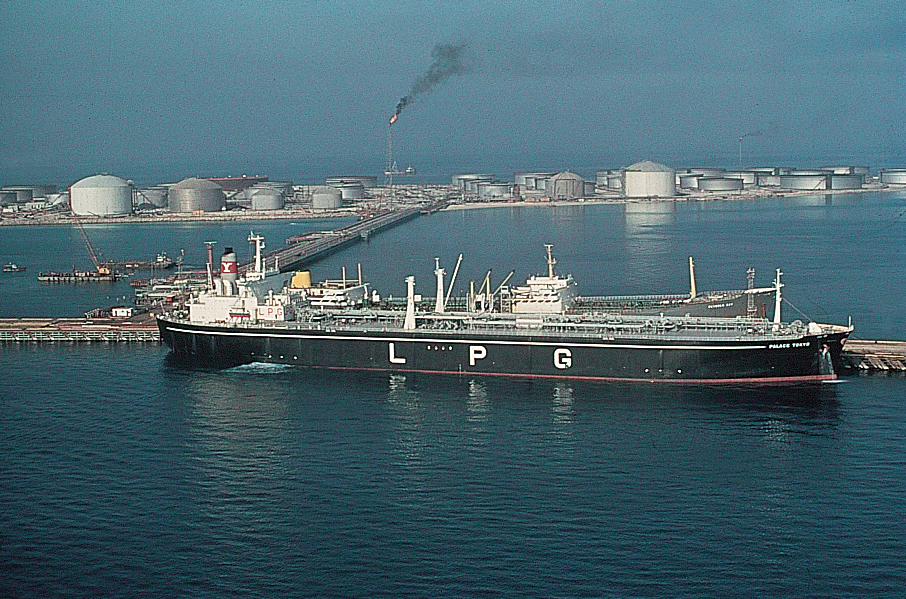
Manufacturing is developing in the Arab world. Jordan, Lebanon, Morocco, Tunisia, and Egypt receive a significant amount of income from manufacturing. In some of the poorer Arab countries, individuals must go abroad to other Arab countries or to Europe to work. They send money to their families at home. This money makes up a significant portion of the economies of some Arab countries.
A scarcity of fresh water has limited the development of agriculture throughout the Arab world. Large-scale irrigation projects have increased the amount of fresh water for agricultural use. Formerly dry regions have been turned into farmland. However, these large projects can be harmful to the environment. They deplete natural aquifers (underground water resources). Modern desalination technologies that process seawater to remove salt have also increased the supply of fresh water. But these technologies are expensive and sometimes unreliable. Other developments in agricultural technology include the use of greenhouses to grow flowers, fruits, and vegetables.
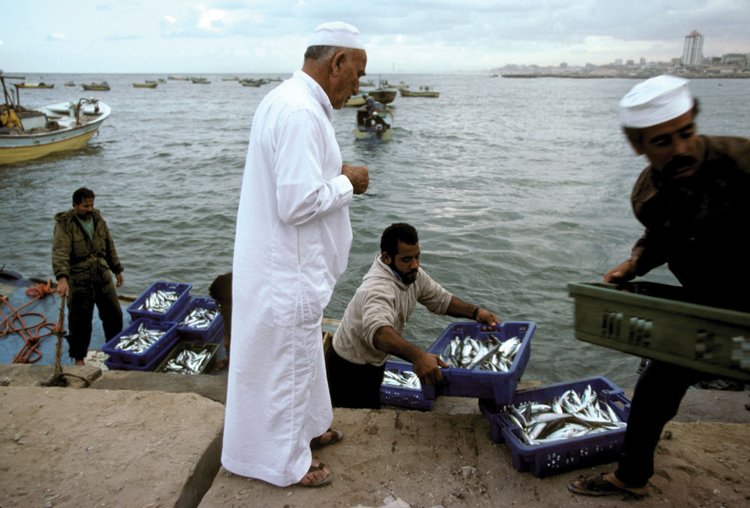
History
The Arabs before Islam.
References to Arabs as nomads and camel herders of northern Arabia appear in writings dating back to the 800’s B.C. The name Arab was later applied to all inhabitants of the Arabian Peninsula, and others in Syria and Iraq who spoke Arabic. Arabs at this time were a tribal society. Groups were organized by family lineages that all traced their origins back to a common ancestor. Politically, tribal society in the Arabian Peninsula was fragmented. Tribes typically broke up into smaller clans that roamed the desert. The desert travelers occasionally stopped at oases and wells for food and water. About the 400’s B.C., some Arab families established several small states in the Arabian Peninsula at centers for the overland caravan trade. One of these states centered in Petra, in what is now Jordan. Arabs known as Nabataeans founded Petra. The Roman Empire conquered Petra in A.D. 106, but it continued to flourish until the early A.D. 200’s. Another state centered around the oasis of Palmyra in the Syrian Desert. Palmyra also fell under Roman domination by about A.D. 160.
The rise of Islam and the Islamic Empire.
The prophet Muhammad, one of history’s most important figures, was born in the Arab city of Mecca about A.D. 570. Muslims believe that God revealed the teachings of Islam to Muhammad, who began preaching about 610. Islam is an Arabic word that means surrender or submission. Today, Islam is the world’s second largest religion, next to Christianity.
Muhammad preached a monotheistic religion (belief in one God), like that of Jews and Christians. He fled with his followers north to Medina, then called Yathrib, in 622 when pagan Arabs of Mecca opposed him. This year became known as the year of the Hijra (migration), also spelled Hijrah or Hegira. It later became the first year of the Islamic calendar. In Medina, Muhammad organized his followers into a community. This community quickly grew into a state that controlled much of the Arabian Peninsula. Today, Mecca and Medina are Islam’s two holiest cities.
After Muhammad’s death in 632, Muslim rulers called caliphs headed the Islamic state. Armies under the caliphs soon seized the rest of Arabia and an area stretching from Egypt to Iran. The result was a vast and expanding new empire dominated by Arabian Muslims. Islam was the official religion of the empire. Arabic was its official language.
For several hundred years, the political life of the empire was dominated by three families from Muhammad’s tribe of Quraysh. These families were the Umayyads, the Abbasids, and the Alids. The Umayyads ruled from 661 to 750. Their capital was Damascus. They extended the empire as far west as Spain and as far east as India. In 750, the Umayyads were overthrown by the Abbasids, though they retained control of Spain. The Abbasids built themselves a splendid new capital in Iraq, called Baghdad. After about 850, the Abbasids increasingly lost control of distant parts of the empire. The distant areas became independent under local Islamic dynasties (ruling families). The Alids, the main rivals of the Umayyads and Abbasids, made many unsuccessful attempts to overthrow them. The Alids finally established the Fātimid dynasty in northern Africa in 909. For their capital in Egypt, the Fātimids founded the city of Cairo. They ruled over Egypt until 1171.
A sense of Arab identity seems to have emerged in connection with the spread of Islam. This sense of “Arabness” resulted partly from use of the Arabic language and partly from pride in the Islamic Empire. It also stemmed from identification with the rich literary and scientific culture that developed under the Umayyads and Abbasids.
From the 1000’s to the 1500’s, parts of the eastern Arab lands were conquered by several waves of non-Arab invaders. Chief among these were the Seljuk Turks and the Mongols. The Mongols executed the last Abbasid caliph in Baghdad in 1258. Northern Africa remained in the hands of local groups, mainly Arabs and Berbers.
Ottoman and European rule.
By the mid-1500’s, nearly all Arab territories had come under the control of the Ottoman Empire. It centered in what is now Turkey and stretched far into Europe. The Arab lands were an important part of the empire. Many high-ranking Ottoman officials were of Arab origin. But these Arabs regarded themselves as Ottomans and Muslims, not as Arabs.
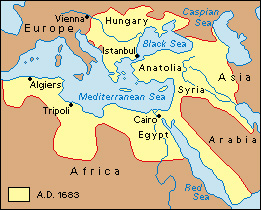
Beginning in the mid-1700’s, the rapid economic and military development of much of Europe gave European states an advantage over the Ottomans. In their efforts to modernize their economies, the Ottomans often developed large debts to European financiers. The financiers then sometimes persuaded their governments to seize economic or political control of Ottoman possessions to ensure repayment of the debts. In other cases, European nations simply invaded Ottoman territories. France began its occupation of Algeria in 1830. It controlled Tunisia and Morocco by the early 1900’s. Beginning in the late 1800’s, the United Kingdom took over Egypt and Sudan. Italy gained control of Libya in 1912. By the start of World War I (1914-1918), all of northern Africa was under European control. The United Kingdom also controlled many of the affairs of the small Arab states surrounding the Persian Gulf.
The Ottoman Empire entered World War I on the side of Germany in 1914. The United Kingdom then helped stir up an Arab nationalist revolt against the Ottomans. The United Kingdom promised the leaders of the revolt that it would recognize an independent Arab government in former Ottoman territories after the war. But the United Kingdom also made a secret agreement with France to divide these territories into British and French spheres of influence after the war. When World War I ended in 1918, the League of Nations—a forerunner of the United Nations—divided the Arab areas still held by the Ottomans between the United Kingdom and France. In turn, the United Kingdom and France were expected to supervise these lands and help them attain self-government. The supervised lands were known as mandated territories.— The United Kingdom received mandates over Iraq and Palestine, which included present-day Jordan and Israel. France received what are now Syria and Lebanon.

Arab nationalism
was part of a nationalist idea that spread through much of the world during the 1800’s and 1900’s. This idea centered on the belief that humanity was divided into distinct nations or peoples. The members of each nation shared a common history and language. Each nation had a historic claim to a particular homeland.
Among most Arabs, Islam remained the main binding force for many years. Significant Arab nationalist movements did not develop until the early 1900’s. The movements took two forms. In some cases, nationalist feeling arose around particular areas or regions as a form of patriotism. In others, it centered on factors of common descent and the shared Arabic language as sources of unity. This form of nationalism later grew into a movement for Arab political unification called Pan-Arabism.
Struggles for independence.
By the early 1920’s, the main centers of population in the Arab world had been split into more than 15 European colonies and protectorates (territories under partial control). The influence of the colonial powers divided these colonies politically, economically, and culturally. Because of these divisions, the goal of Pan-Arab unification became less important than that of independence within each colony.
Most of the Arab lands won their independence in stages after World War II ended in 1945. Some did so peacefully. Others had to struggle. The last colonies to become independent—British-controlled Bahrain, Qatar, and the states that now make up the United Arab Emirates—did so in 1971.
Arabs today
Arab countries emerged from colonial rule as free and independent states. But most continue to struggle with many problems. Modern Arab countries face significant challenges. These challenges include a lack of unity in the Arab world and economic inequality between and within Arab states. Sources of friction include the Arab-Israeli conflict and religious and ethnic conflicts. Many Arab states also lack democratically elected governments. The Arab world has a significant role in world affairs due to its location and the petroleum reserves that it owns. As a result, foreign interest and foreign involvement in Arab politics represent another challenge that modern Arabs must face. Many conflicts arise between Islamic tradition and the influence of the West—that is, Europe and the United States.
The search for unity
among all Arab countries has not been successful. Several times, two or three Arab countries have attempted to unite into a single state. For example, Syria and Egypt joined to form the United Arab Republic in 1958, but the union ended when Syria withdrew in 1961. In 1945, seven countries founded the Arab League. Today, 21 countries and the Palestine Liberation Organization (PLO) belong to the league. The organization works to promote closer political, economic, and social relations among its members.
The Arab-Israeli conflict
can best be understood as a struggle between two nationalist movements. Both movements claim Palestine as their homeland. During World War I, British officials had suggested to Arab leaders that Palestine would be included in areas to be granted Arab self-determination. The British, however, also promised Palestine to leaders of the Zionist movement. The Zionists sought to make Palestine an independent Jewish nation. The conflicting promises to Arabs and Zionists regarding Palestine contributed to a struggle between the two nationalist movements.
More than 700,000 Arabs were forced to flee historic Palestine following the creation of the Jewish state of Israel in 1948. This set off hostilities that led to five wars between Israel and Arab countries from 1948 to 1982. The conflict continues today. The first Palestinian intifada (uprising) lasted from 1987 to 1993. In 1993, Israel and the PLO agreed to a plan for Palestinian self-government in the Gaza Strip and the West Bank. Israel occupied those Arab lands in 1967. However, talks between the two sides failed to resolve several remaining disagreements. In 2000, Palestinians in the West Bank and Gaza began a second intifada that lasted until 2005. Israel responded with police crackdowns and military attacks.
Egypt and Israel signed a peace treaty in 1979. In 1994, Jordan and Israel signed a declaration that formally ended a state of war between the two countries. But Israel has not made final peace agreements with Syria or with the PLO. The long and bloody struggle between the Palestinian people and the state of Israel has brought great suffering, especially to the Palestinians. It remains a problem of major importance to world peace.
Economic inequality.
The different economic needs and political goals of Arab states have at times made them bitter rivals. The wealth of some Arab countries from petroleum exports has contributed to tension. Petroleum-poor states resent the wealth of their richer neighbors and seek to share in the oil income. Disagreements have also occurred among petroleum exporters over pricing and production policies.
Disagreements regarding petroleum wealth helped set off an invasion of Kuwait by Iraq in 1990. Iraq’s president, Saddam Hussein, wished to gain control of Kuwait’s vast oil reserves. The subsequent war severely divided Arab states. Several Arab countries, including Saudi Arabia and Egypt, took part in a coalition led by the United States that fought the Persian Gulf War of 1991 and expelled Iraqi forces from Kuwait.
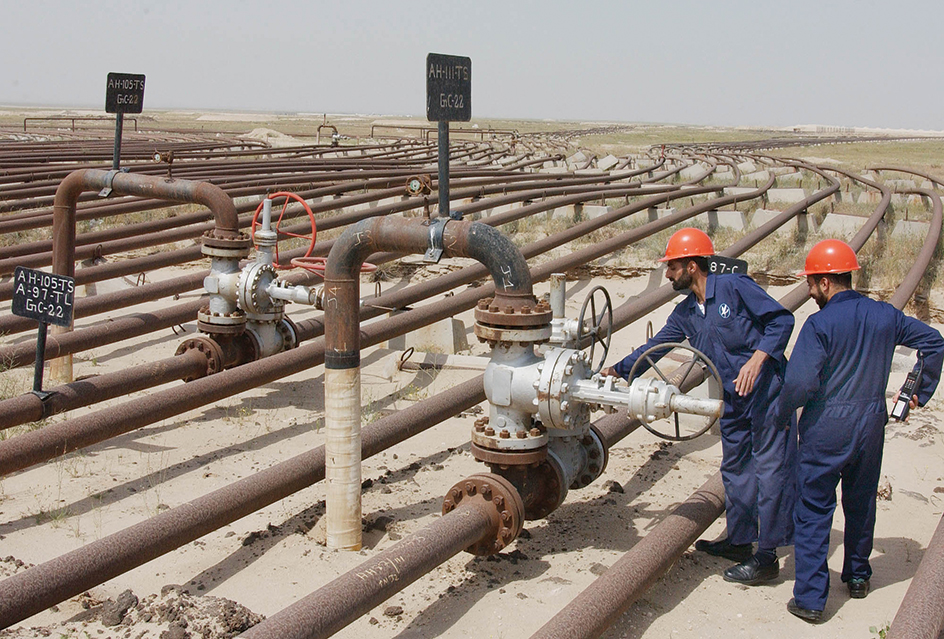
Religious and ethnic clashes.
Territorial ambitions or religious differences between Arab countries or between groups within the countries themselves have led to other clashes in the Arab world. For example, a long and bloody conflict in Lebanon began in 1975. It reflected the struggle for political power between Christian and Muslim religious communities. Both Christian groups and Muslim groups also began fighting among themselves. The civil war did not end until 1991.
In Iraq, old ethnic hostilities between Iraqi Arabs and Kurds emerged after the Persian Gulf War of 1991 and the Iraq War (2003-2011). The Kurds are Iraq’s largest non-Arab ethnic minority. Old religious tensions between Iraqi Sunni and Shī`ite Muslims also erupted following the war.
Lack of democracy.
A small number of powerful people dominate political life in most Arab lands. The ruling group may consist of military leaders or wealthy individuals of prominent tribal background. The European powers took some limited steps toward developing institutions of democratic government in their Arab colonies. But they kept such institutions from becoming strong enough to threaten their colonial rule. They also failed to create economic or educational systems that would stimulate the growth of a middle class. As a result, most independent Arab states lack strong institutions of multiparty, civilian government.
In late 2010 and 2011, antigovernment protests erupted in several Arab countries. The protests were fueled in part by poor economic conditions and accusations of government corruption. Protesters clashed with government security forces in Bahrain, Egypt, Libya, Syria, Tunisia, and Yemen. The presidents of Tunisia, Egypt, and Yemen stepped down. In Libya, the protests led to an armed rebellion that overthrew Mu’ammar Muhammad al-Qadhafi.
Relations with Europe and the United States.
In 2003, the United States led a coalition of nations in a war that toppled the Iraqi regime of Saddam Hussein. Coalition troops invaded the country from Kuwait in the south. However, most other Arab countries opposed this war. Many Arabs saw the war as an intervention by the United States in Arab affairs. The war contributed to widespread feelings of anti-Americanism among citizens of Arab countries and other, non-Arab Islamic states. Many nationalist Arabs blame their current lack of political rights on the long periods of oppressive European colonialism. They also blame the United States for its support of Saudi Arabia and other undemocratic regimes, and for its support of Israel.
Activist Islamist movements in the Arab world have long perceived European and American influences on traditional Arab Islamic culture as a threat. Such movements have also expressed frustration with the lack of democracy and the economic inequality in the Arab world. They are also frustrated with the ongoing Arab-Israeli conflict. Islamist movement groups often blame foreign powers, especially the United States, as the source of many or most of the problems Arabs face today.
Activist Islamist movements seek political, social, and economic reform. The goal of many movement groups is to ensure that Arab governments represent and uphold Islamic morality and Islamic values of social and economic justice. The movements often work to provide social services, such as free health care, for the poor. Some groups, however, have engaged in armed attacks against their own governments and sometimes against foreigners. Americans and Europeans often refer to activist Islamist movements as militant Islam or radical Islam. Some government leaders and media have tended to label all Islamist movement groups as terrorist organizations. Others point out, however, that only a small number of such groups use violence or terrorism to achieve their goals.
One terrorist network, known as al-Qa`ida, supports the activities of Muslim extremists around the world. Al-Qa`ida is an Arabic term that means the base. Its founder and leader was Osama bin Laden, a Saudi-born millionaire. Al-Qa`ida believes that governments of Muslim countries that fail to follow Islamic law should be overthrown. Al-Qa`ida also considers the United States to be a primary enemy of Islam.
In 2001, members of al-Qa`ida launched terrorist attacks that destroyed the World Trade Center in New York City and damaged the Pentagon Building near Washington, D.C. Other terrorist attacks attributed to al-Qa`ida have occurred since. Most leaders in the Arab world have denounced these crimes and promised cooperation in helping bring the terrorists to justice. Many prominent Muslim clerics also issued fatwas (legal opinions) that these attacks violated Islamic law. Osama bin Laden was killed in a U.S. military raid in Pakistan in 2011.
Other challenges.
Arabs today take great pride in their cultural heritage but face major challenges. The problems of poverty, overpopulation, poor health care, and inadequate educational facilities are severe in some Arab states. In addition, the oil-rich states must plan carefully for the day when oil reserves run dry. Many of these countries are working to develop other economic activities that can help maintain their growth in the post-petroleum age. Finally, Arabs also must deal with powerful conflicts between Islamic tradition and the challenges of modernity.
